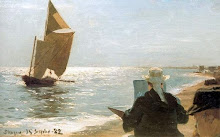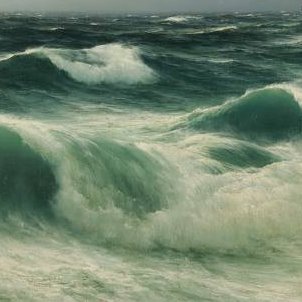Paul Hampden Dougherty (September 6, 1877 – January 9, 1947) was one of America's most important marine painters. He was elected to membership of the prestigious National Academy of Design and was one of the most honored painters of his era. Often compared to Winslow Homer, Dougherty (pronounced dog-er-tee) became internationally recognized for his American Impressionism paintings of the coasts of Maine and Cornwall in the years after the turn of the 20th Century. His work has been described as bold and masculine and his artistic production consisted of many paintings of breakers crashing against rocky coasts and mountain landscapes, but he was more versatile than many viewers realized. Dougherty painted still lifes, created prints and even sculpted.
The son of a prominent attorney, Paul Dougherty graduated from law school and passed the bar, but chose art over the law. His artistic training was relatively brief but through natural talent and a prodigious work ethic, he quickly came to prominence. A sophisticated and erudite man and a world traveler, Dougherty sketched and exhibited extensively on both the east and west coast of the United States, in the British Isles, throughout Europe and in Asia. He spent the first half of his career based in the east, but he moved west in 1928 and eventually spent the summers in Carmel and the cooler winter months in the desert. Dougherty won almost every major award at the annual exhibitions of the National Academy of Design in New York as well as a Gold Medal at the Panama-Pacific International Exposition in San Francisco. By 1915 many American museums had purchased his works for their permanent collections.
Boldness and rigour is not simply a matter of energetic, decisive brushstrokes but comes through in clarity of composition and design.
Boldness and rigour is not simply a matter of energetic, decisive brushstrokes but comes through in clarity of composition and design.



































No comments:
Post a Comment